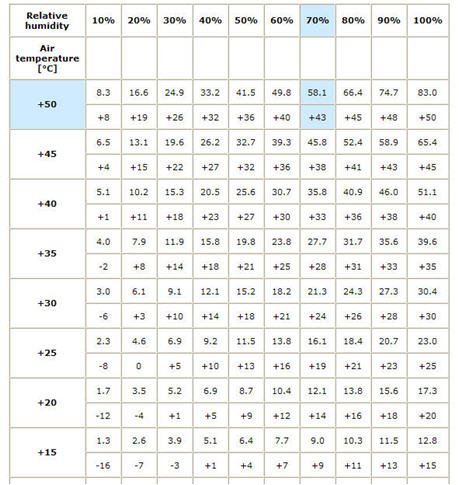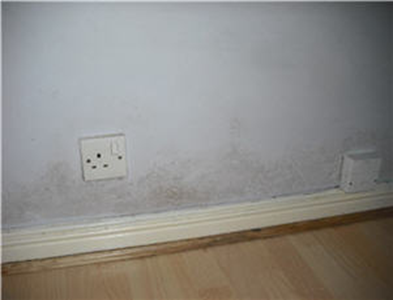Avoiding condensation problems
Condensation
Condensation on walls and floors can often be mistaken for water ingress through the fabric of the building. It is, however, quite the opposite in that the moisture comes from within the room. A key factor in the likelihood of condensation forming is the relative humidity of the air. Higher relative humidity coming into contact with relatively cold surfaces will cause the moisture to be condensed out of the air onto those surfaces. This happens because the air in contact or very close to the cold surface is cooled to below it’s dew point. (Dew point is the temperature at which air becomes saturated with water at the air cools.)
Causes
The more humid, the more likely that condensation will result. The humidity inside a closed room will depend on a number of factors.
- Humidity of incoming ventilation air
- Temperature rise from heating
- Moisture contributed to the internal atmosphere from within the room
Considering these factors individually,
(i) If ventilation air is fed directly from outside or via natural ventilation, from outside, then that air will have the humidity determined by location and weather conditions outside. In a hot desert climate this can be as low as 20% relative humidity. On a wet day in the city this can be around 80-90%.
(ii) In winter, when space heating is turned on there will be a drop in relative humidity resulting from the rise in air temperature. The same amount of water vapour in the air at higher temperature represents a lower relative humidity.

For example,
if outside air at15 deg C and 60% relative humidity has 4.6 grams water (0.6 x 7.7grams) per cubic metre, then heating it to 25 deg C without adding or taking away any water will reduce the relative humidity to 20%.
However, in winter the colder outside building temperatures will tend to lead to internal wall and window surfaces being cooler, which in turn increases the possibility of the formation of condensation on those surfaces. Double glazing and good insulation of the external skin of the building will reduce condensation on those elements of the building structure.
(iii) Common contributors to the moisture level within the building are the occupants from both breathing and perspiration, wet processes such as washing, bathing, showering, cooking & clothes drying. Taking cooking as an example,
In a 3mt x 4 mt kitchen with standard ceiling height there is 30 cubic mt of air. If the room is initially 20 deg C and 60% relative humidity, and an open pan of potatoes being boiled evaporates away 120 ml of the water this will contribute 4 gm of water to each cubic meter of air. This is enough to raise the relative humidity from 60% (10.4gm from Table A) to 14.4gm which equates to a relative humidity of 83%. The dew point rises from 12 deg C to 16.6 deg C which means that with an outside temperature of 15 deg C, single glazed windows will run with condensation.
Problem areas
Condensation does not form evenly on all outside walls and windows. Single glazed windows are the first place it will be noticed and they have the poorest insulation value and so the lowest inside surface temperature. Any wall areas which have ‘cold bridging’ such as solid lintels or mortar bridging the cavity can become problem areas. Lower on ground floor walls can commonly suffer as the unheated area of wall at the base can be cooler. This can be mistaken for rising damp.
The signs of regular condensation are often the formation of black mould which only grows where damp conditions exist.

Where air is stagnant in the corners of rooms and behind furniture it can cool more readily against cool surfaces and unseen condensation can form.
Solutions
1. Where condensation is caused by high humidity resulting from human activity increased ventilation to naturally keep the relative humidity down may well be a complete solution. Humidity controlled ventilation fans can be the most energy efficient means of controlling humidity.
2. The use of a dehumidifier to control relative humidity and remove excess moisture is a solution where additional ventilation is not practical.
3. More even heating of the area with some continuous thermostatically controlled heat from radiator type heaters may allow the interior surfaces to maintain adequate heat to reduce condensation. Care needs to be taken when adding surface insulation to ensure that interstitial condensation does not form. This is condensation within the structure.
4. Improved insulation and double or triple glazing will also avoid those cold surfaces on which condensation can be a problem.
5. Improved air movement from the use of a ceiling fan or similar. This is particularly worthwhile where high ceilings exist as the warm air tends to rise and stratify with cooler air trapped lower in the room.









